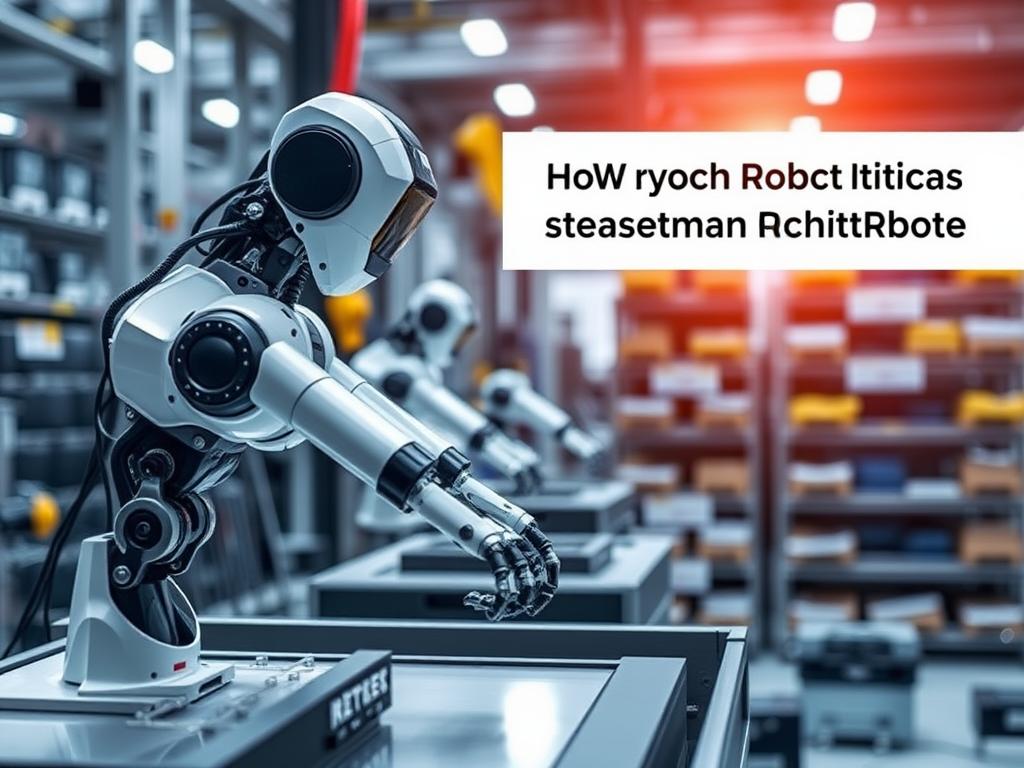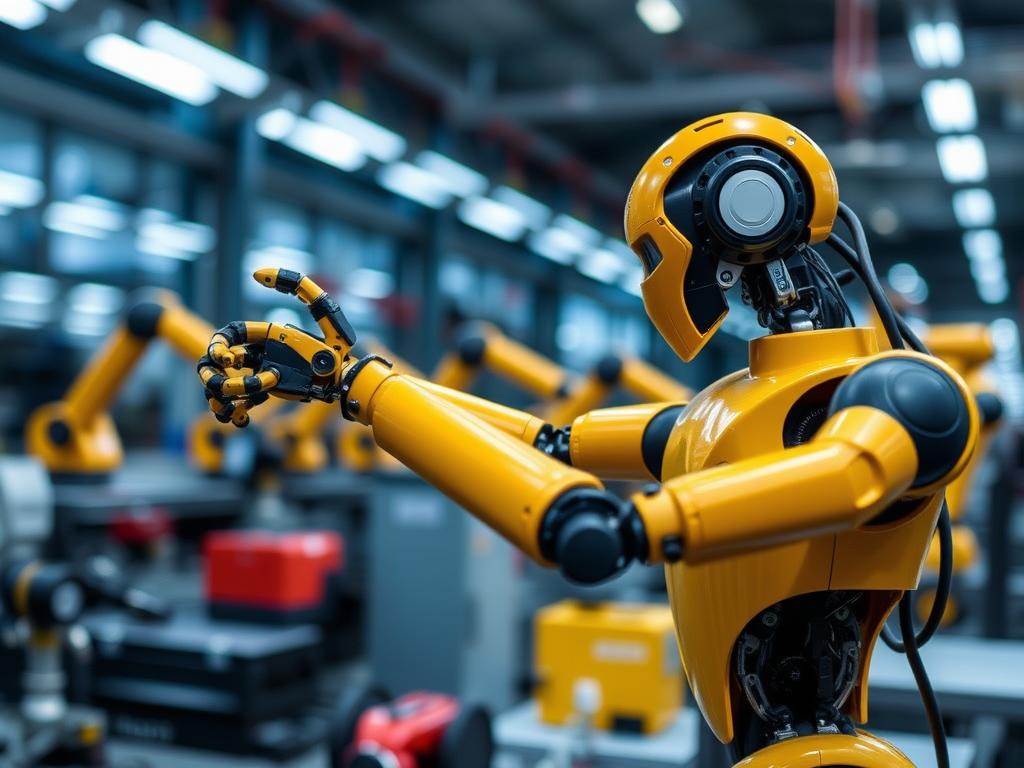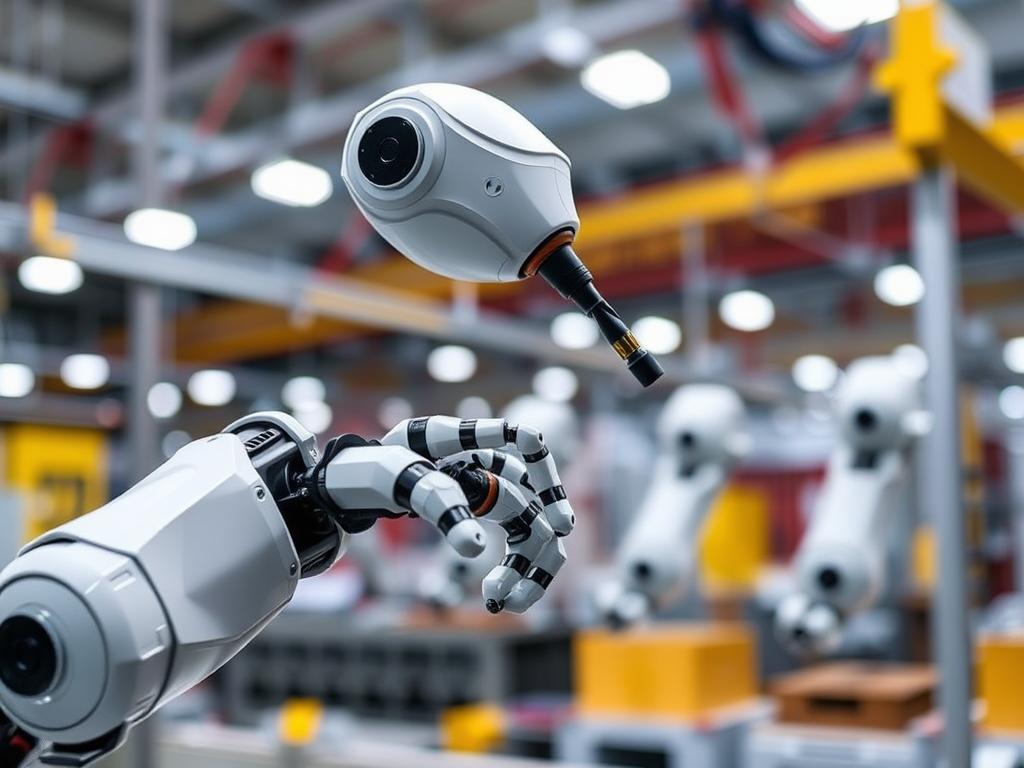The Dawn of Robotics in Manufacturing
Manufacturing has always been a cornerstone of human civilization, evolving over centuries from simple handcraft to complex mechanized processes. Today, as technology advances at an unprecedented pace, robotics is undeniably at the forefront of this transformation. Robotics in manufacturing is no longer a futuristic concept—it’s a reality reshaping how factories operate worldwide. By integrating automation, precision, and smart technology, robotics is redefining efficiency, safety, and productivity in the manufacturing sector. If you’re curious about how this transformation is unfolding, then you’re in the right place to explore the exciting impact of robotics on manufacturing.
What Robotics Brings to Manufacturing

The integration of robotics into manufacturing brings numerous advantages that traditional methods cannot match. Robotics systems excel in performing repetitive, dangerous, or highly precise tasks with a level of accuracy and speed that humans simply cannot sustain over long shifts. These benefits are revolutionizing production lines across industries, from automotive to electronics and beyond.
One of the key impacts robotics has on manufacturing is enhancing productivity. Robots can operate 24/7 without breaks, fatigue, or distractions, increasing output significantly. Additionally, these robots perform with exceptional precision, reducing the likelihood of defects and improving the overall quality of products. This directly translates into lower costs and higher customer satisfaction.
Safety is another critical area transformed by robotics. Industrial robots can handle hazardous materials and work in dangerous conditions, minimizing workplace accidents and protecting human workers from harm. This shift not only safeguards employees but also reduces the financial and operational risks associated with workplace injuries.
Common Types of Robotics in Manufacturing

Manufacturing utilizes a broad spectrum of robotic technologies, each tailored to specific tasks:
- Articulated Robots: These robotic arms are flexible and capable of handling complex assembly tasks, welding, and material handling.
- SCARA Robots: Known for speed and precision, ideal for pick-and-place operations, packaging, and small parts assembly.
- Delta Robots: Parallel arm robots used in high-speed sorting and packaging processes.
- Collaborative Robots (Cobots): Designed to work safely alongside humans, assisting with tasks that require adaptability and precision.
Each of these robotic types offers distinct advantages and has become fundamental in different manufacturing environments.
How Robotics is Reshaping the Manufacturing Process
The influence of robotics on manufacturing transcends simply replacing manual labor. What’s truly remarkable is how robotics is enabling new processes and business models. Take for instance mass customization; robotics enables factories to produce highly customized products without sacrificing efficiency or cost-effectiveness. This capability is a game-changer in industries where consumer preferences demand more personalized goods.
Moreover, robots equipped with advanced sensors and AI can monitor themselves and the manufacturing environment, leading to predictive maintenance. This means they can foresee potential failures and schedule repairs before breakdowns occur, reducing downtime and extending the lifespan of equipment.
Table: Traditional Manufacturing vs. Robotics-Enhanced Manufacturing
| Aspect | Traditional Manufacturing | Robotics-Enhanced Manufacturing |
|---|---|---|
| Speed | Limited by human capacity and fatigue | Operates continuously with high speed |
| Precision | Human variability causes inconsistencies | High repeatability and accuracy |
| Safety | Workers face risks in hazardous environments | Robots handle dangerous tasks, improving safety |
| Flexibility | Limited to standard processes and setups | Quickly adaptable to new tasks and products |
| Cost Efficiency | Higher labor costs and waste | Lower operational costs and reduced defects |
The Role of Artificial Intelligence and Machine Learning

Robotics in manufacturing has evolved dramatically thanks to technology like artificial intelligence (AI) and machine learning. These advancements empower robots to learn from their environments and improve their performance autonomously. For example, AI-driven robotics can optimize assembly processes by analyzing data and adapting their movements to increase efficiency or reduce errors.
Machine learning also plays a vital role in quality control. With high-resolution cameras and sensors, robots can detect defects in real-time, dramatically reducing waste and ensuring only top-quality products reach consumers.
Collaborative Robots: The Future of Human-Robot Interaction
Unlike traditional industrial robots, which often require safety cages and barriers, collaborative robots or cobots are designed to safely share the workspace with human operators. Cobots are enhancing manufacturing by assisting workers with tasks that demand dexterity, decision-making, and flexibility. This synergy between humans and robots is fostering a more intuitive production environment, where each complements the other’s strengths for superior results.
Cobots are also easier to program and reconfigure, which means small and medium-sized enterprises (SMEs) can adopt robotics without a huge upfront investment or complex technical expertise.
List: Benefits of Collaborative Robots in Manufacturing
- Improved human safety by reducing physical strain
- Increased efficiency through human-robot teamwork
- Greater flexibility in production scheduling
- Quick redeployment to different tasks as needs change
- Lower implementation and operational costs
Challenges and Considerations
While the advantages of robotics in manufacturing are clear, companies must also navigate challenges. High upfront investment costs can be daunting, especially for smaller firms. Integration of robotics with existing processes requires strategic planning and often, staff retraining or upskilling. Cybersecurity is another concern, as connected robotic systems need protection from hacking or misuse.
Moreover, as robots take on more repetitive or hazardous tasks, the role of human employees is shifting. Companies must consider how to manage workforce transitions, including retraining and creating new roles that complement automated systems.
Global Industry Impact and Future Outlook
The global impact of robotics in manufacturing is significant and growing. According to industry reports, the adoption of industrial robots has surged in regions like Asia, Europe, and North America, driven by the need for efficient and resilient supply chains. Robotics technology is also accelerating innovation in emerging sectors such as renewable energy, electronics, and healthcare manufacturing.
Looking ahead, trends like the Industrial Internet of Things (IIoT), 5G connectivity, and augmented reality (AR) are expected to further integrate robotics into smart factories, creating a fully interconnected, self-optimizing industrial ecosystem.
Table: Projected Robotics Trends in Manufacturing by 2030
| Trend | Description | Impact |
|---|---|---|
| AI-Driven Automation | Robots equipped with advanced AI for adaptive decision-making | Boosts productivity, quality, and flexibility |
| Human-Robot Collaboration | Enhanced cobot capabilities and safety features | More flexible and efficient hybrid work environments |
| Smart Factory Integration | Seamless robot integration with IIoT and data analytics | Enables predictive maintenance and optimized workflows |
| Customization and On-Demand Manufacturing | Robotics enabling small-batch, highly customized production | Meets consumer demand for personalized goods |
How Businesses Can Embrace Robotics Today
For manufacturers looking to embrace robotics, starting with clear goals and a roadmap is essential. It’s important to assess which processes will benefit most from automation and whether to invest in fully automated robots or collaborative robots, depending on the scale and complexity of operations. Engaging with industry experts and robotic solution vendors can help identify the best technologies tailored to specific manufacturing needs.
Training employees to work alongside robots and understand their operation is equally important. A culture that embraces innovation and continuous learning will foster successful robotics adoption and unlock its full potential.
Checklist: Steps to Integrate Robotics in Manufacturing
- Evaluate production processes for automation suitability
- Choose appropriate robotic technologies (e.g., cobots vs. industrial robots)
- Plan for workforce training and change management
- Implement cybersecurity measures for robotic systems
- Set performance metrics to track benefits and ongoing improvements
Conclusion
Robotics is undeniably transforming manufacturing into a more efficient, safe, and flexible industry. From boosting productivity and precision to fostering new ways of human-robot collaboration, robotics integration is shaping the factories of the future. Though challenges exist, the benefits far outweigh them, especially for businesses ready to innovate and adapt. As robotics technology continues evolving, the manufacturing world will witness even more groundbreaking changes, powering a new era where human creativity and robotic consistency work hand in hand to meet the demands of tomorrow’s market. Embracing robotics today means stepping confidently into a future fueled by innovation, resilience, and sustainable growth.




